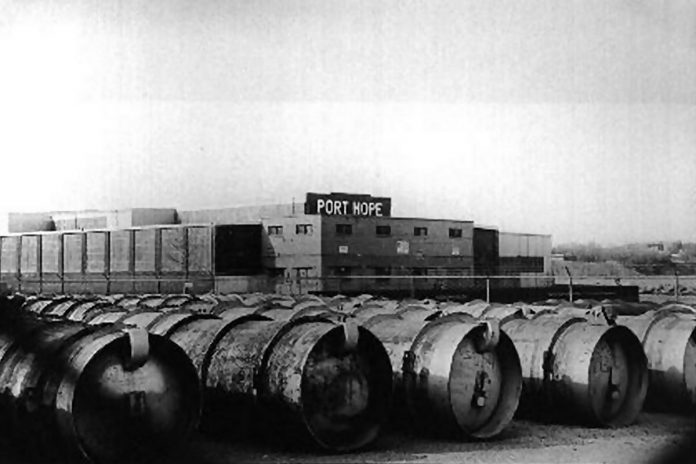
The Port Hope Community Health Concerns Committee (PHCHCC) is sponsoring an upcoming public meeting on the topics of past, current, and future issues related to nuclear power in the Municipality of Port Hope.
Leading Canadian anti-nuclear activist Dr. Gordon Edwards, president of the Canadian Coalition for Nuclear Responsibility, will share the floor with PHCHCC chair Faye More on Wednesday (October 29) in Port Hope. The event runs from 6:30 to 9 p.m. in the Dr. Hawkins gym of Port Hope High School at 130 Highland Drive.
There will be a question-and-answer period for the public following the presentations.
“The public meeting with our guest (Dr. Edwards) will focus much-needed attention and discussion on the health, safety, security, and lived experiences of people who are too often treated as invisible where nuclear issues are involved,” More told kawarthaNOW.
“After the meeting, the (PHCHCC) will continue to do what we have been doing for many years as volunteers, which is to bring forward concerns, requests, and recommendations to those with the power and responsibility to put the welfare of people first.”
She said the committee intends to present that information to various stakeholders, including the prime minister and federal cabinet, the premier of Ontario, leaders of the provincial parties, political representatives at all levels, the Canadian Nuclear Safety Commission, and the auditor general of Canada.
“This is the first in a series of public meetings the committee will be hosting, and we are grateful to have Edwards with us,” More said, noting his extensive knowledge and many years of experience in the field.
Dr. Edwards co-founded the not-for-profit Canadian Coalition for Nuclear Responsibility in 1975, the year after he first gained public profile by winning a debate on the necessity of nuclear reactors with Edward Teller, the famous Hungarian-American physicist and “father of the hydrogen bomb,” during Global Television’s The Great Debate series hosted and moderated by Pierre Berton.
During the October 29 public meeting, Dr. Edwards will speak about numerous issues, including a federal compensation fund for current and former Port Hope residents, proactive and precautionary disclosure of all contaminated locations, federal remediation policies and practices in Port Hope (including the proposal to change the remediation criteria for arsenic), independent health monitoring and reporting, the proposed new nuclear power plant in Port Hope’s Wesleyville community, and a national public inquiry starting with Port Hope into the management of radioactive wastes in Canada.
The PHCHCC said residents of Port Hope have been living with a variety of radioactive and other toxic contaminants in their immediate environment since the 1930s. In response, the volunteer-based PHCHCC was formed in 1994 as an incorporated non-profit organization of current and former residents.
The committee’s goal is to share concerns relating to health and environmental impacts of the contaminants from two nuclear industries operating in the community, as well as the presence of 1.9 million cubic metres of radioactive and heavy metal wastes in more than 1,300 locations within the town.
Port Hope has the largest volume of historic low-level radioactive wastes in Canada, produced between 1933 and 1988 from uranium and radium refining operations of former Crown corporation Eldorado Nuclear Ltd. In 1988, both Eldorado and another Crown corporation, Saskatchewan Mining Development Corporation, were merged and privatized as the Canadian Mining and Energy Corporation (now known as Cameco Corporation).
In 2001, the Government of Canada and the municipalities of Port Hope and Clarington signed a legal agreement known as the Port Hope Area Initiative to clean up the radioactive waste in both communities. In 2012, the federal government committed spending $1.28 billion on what was originally a 10-year initiative, increasing the amount in 2022 to $2.6 billion to carry the initiative through to completion, including long-term monitoring.
This past January, the Ontario government announced it is exploring the potential of building a nuclear power plant in Wesleyville in the Municipality of Port Hope, on the site of an oil-fired power generation station whose construction was abandoned in 1979 and that has since been maintained by Ontario Power Generation (OPG). Earlier this month, OPG opened a “nuclear discovery centre” at 115 Toronto Road in Port Hope that features education exhibits on nuclear power and information on the proposed Wesleyville project.


























